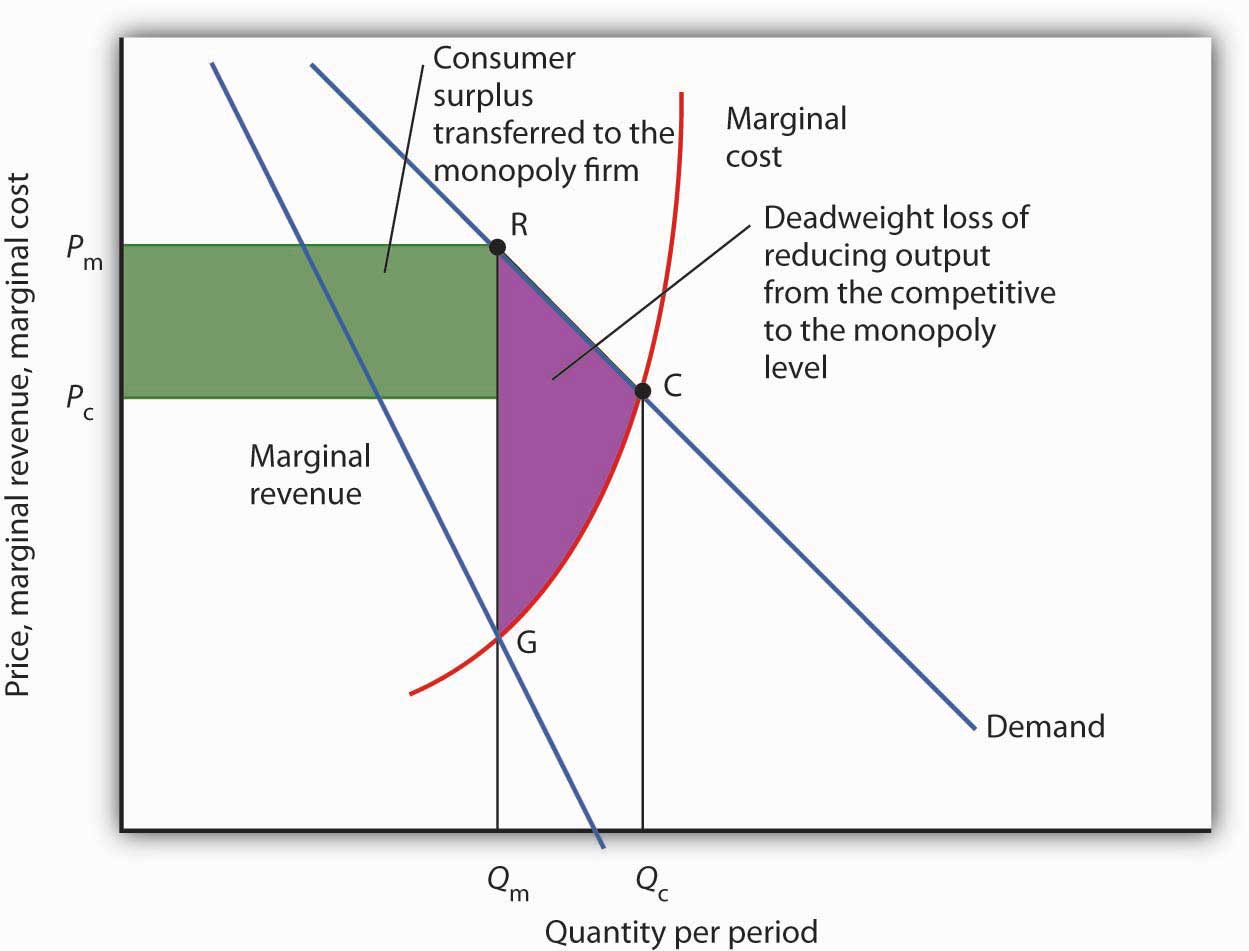How To Calculate The Marginal Revenue Of A Monopoly
48 42 rs.
How to calculate the marginal revenue of a monopoly. Marginal revenue is the difference in total revenue at 3 units of output and at 4 units of output which is rs. All you need to remember is that marginal revenue is the revenue obtained from the additional units sold. It may still receive additional revenue but in a monopolistic market customers will still buy their competitors soda for a higher price. In a monopoly market the demand and supply determine the marginal revenue.
Marginal revenue formula. Marginal revenue has units of dollars total revenue has units of dollars and change in quantity is unitless. Thus the monopoly can tell from the marginal revenue and marginal cost that of the choices given in the table the profit maximizing level of output is 4. If a company wants to increase its sales by 1 unit it will have to drop the product price of all the units it sells.
It is straightforward to calculate profits of given numbers for total revenue and total cost. That is total costs rise and the curve grows steeper as output increases. Marginal revenue will typically decrease with each additional product sold but not as steeply as it would in a monopoly. How to calculate marginal revenue the following example will go over how to calculate marginal revenue in a practical sense with regard to a business.
When the manager of a monopoly firm expands his output to 4 units price falls to rs. In such cases the marginal revenue will be less than the price it has charged the buyer. First we need to calculate the change in revenue. In a competitive market the marginal cost will determine the marginal revenue.
However the size of monopoly profits can also be illustrated graphically with figure 1 which takes the marginal cost and marginal revenue curves from the previous exhibit and adds an average cost curve and the monopolist s perceived demand curve. Indeed the monopoly could seek out the profit maximizing level of output by increasing quantity by a small amount calculating marginal revenue and marginal cost and then either increasing. Total cost and total revenue for a monopolist. Profits for a monopolist can be illustrated with a graph of total revenues and total costs as shown with the example of the hypothetical healthpill firm in this figure the total cost curve has its typical shape.
For example kim s drops the price of its soda from 1 to 0 85. To calculate a change in revenue is a difference in total revenue and revenue figure before the additional unit was sold. Assuming that a monopoly must charge each customer the same price for its good the monopoly faces a downward sloping marginal revenue curve meaning that each additional unit the firm sells brings in less revenue than the unit before. Calculation of marginal revenue step by step the marginal revenue formula is calculated by dividing the change in total revenue by the change in quantity sold.
In a monopoly market the entire sales of the industry are affected.
